46 games is a long season for EFL clubs, but certain clubs yearn to exceed that amount by reaching the play-offs, with the hope of securing promotion.
In League One, former Premier League club Portsmouth look set to secure a return to the Championship, losing just four games from their 43 fixtures to date.
On that journey, they have conceded just 37 goals, a number matched by only two sides in League One – Derby County and Lincoln City.
The former sits behind Pompey in second place, while the latter sits in eight, looking to finish the season strong to barge their way into the top six.
Current Lincoln boss Michael Skubala joined the club in November 2023 with the Imps in 10th position, conceding 17 by the time Skubala.
While that record is nothing to frown upon, Lincoln’s current defensive record suggests that Skubala has improved their defensive performance while also significantly improving their attacking output too.
This scout report will provide a Michael Skubala tactical analysis along with Lincoln City’s defensive tactics and a brief analysis of their strong attacking form of late.
Michael Skubala Formation
Over the course of the campaign, Lincoln have used 3-4-3 the most.
However, in recent months, under Skubala’s leadership, they’ve favoured 3-5-2 (or similar variants like 5-3-2).
The switch in formation took time to arrive, but it allowed for Skubala’s tactics to be more prominent and effective.
The Imps like to build attacks through the centre and the 3-5-2 lends itself to those tactics better than 3-4-3 does.
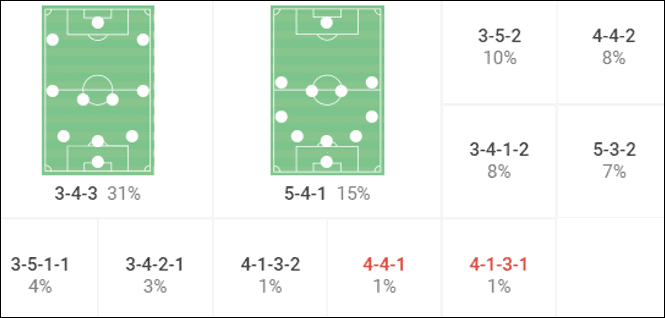
Pressing the backline
Lincoln are not a high-pressing, high-intensity team off the ball the way that, say, Stockport County are, as we covered last week.
The stats tell us that the Imps like to be more reserved in their approach – a PPDA of 12.5 is the third highest in League One, while they have a challenge rating of 5.7, the fifth lowest in the division.
These stats suggest that Lincoln isn’t used to pressing the opposition in high areas often; however, as this analysis segment tells us, they do have a presence in those areas.
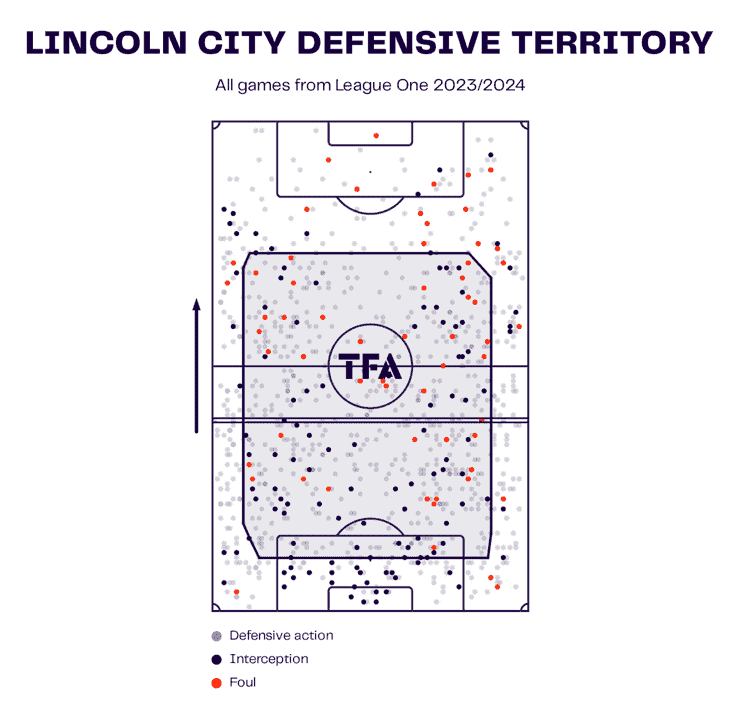
This first visual gives us an inkling of Lincoln’s off-the-ball approach.
What is particularly noteworthy is the lack of interceptions they’ve made this season in high central areas – their general rate of defensive action in the same zone is also lower than in other areas.
They do, however, like to be defensively active in wide areas, even higher up the pitch, which is something else we will touch on later.
As you can see, they make more interceptions and have a high general rate of defensive activity deeper in their own half, which goes hand in hand with the notion that they like to invite some pressure into their own half before engaging.
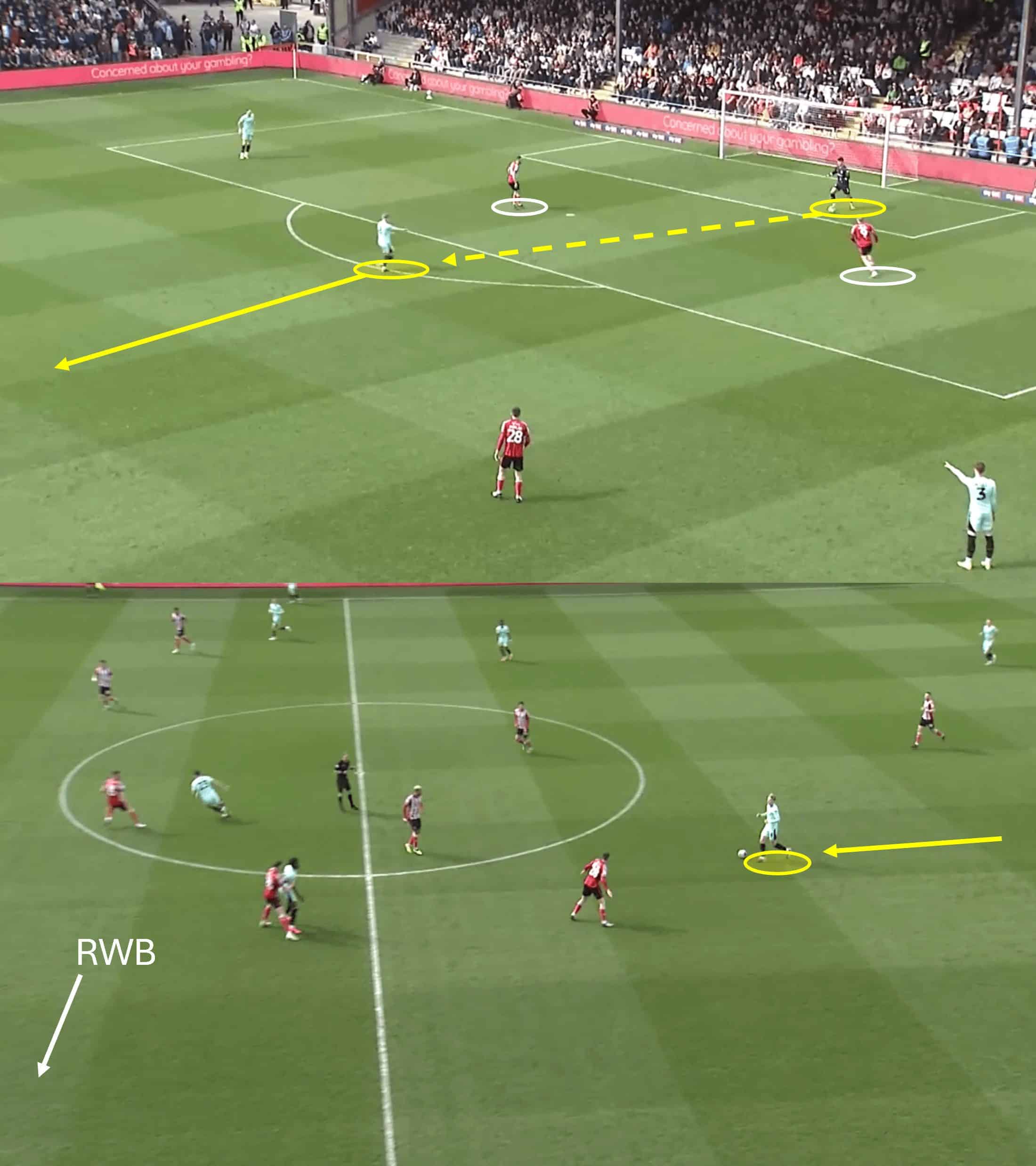
As mentioned, they do have some level of presence in terms of defending from the front, and this comes in the form of the two centre forwards.
They tend to split – one pressing the ball with the other having varied tactical instructions, but they usually either linger between multiple opposition passing options or mark a specific player.
As you can imagine, this leaves an inviting gap for the opposition to play through the centre between the forwards, but this seems to be part of Lincoln’s plan.
While the opposition player is afforded the time and space to receive on the half turn and push forward with the ball, as he approaches the midfield third, he is met by the Lincoln central midfield unit, often with little in the way of attacking options, just like you see above.
Lincoln want the opposition to come through the centre this way as Skubala has faith in his midfielders while also wanting to protect the wide areas in the early phases of the opponent’s possession.
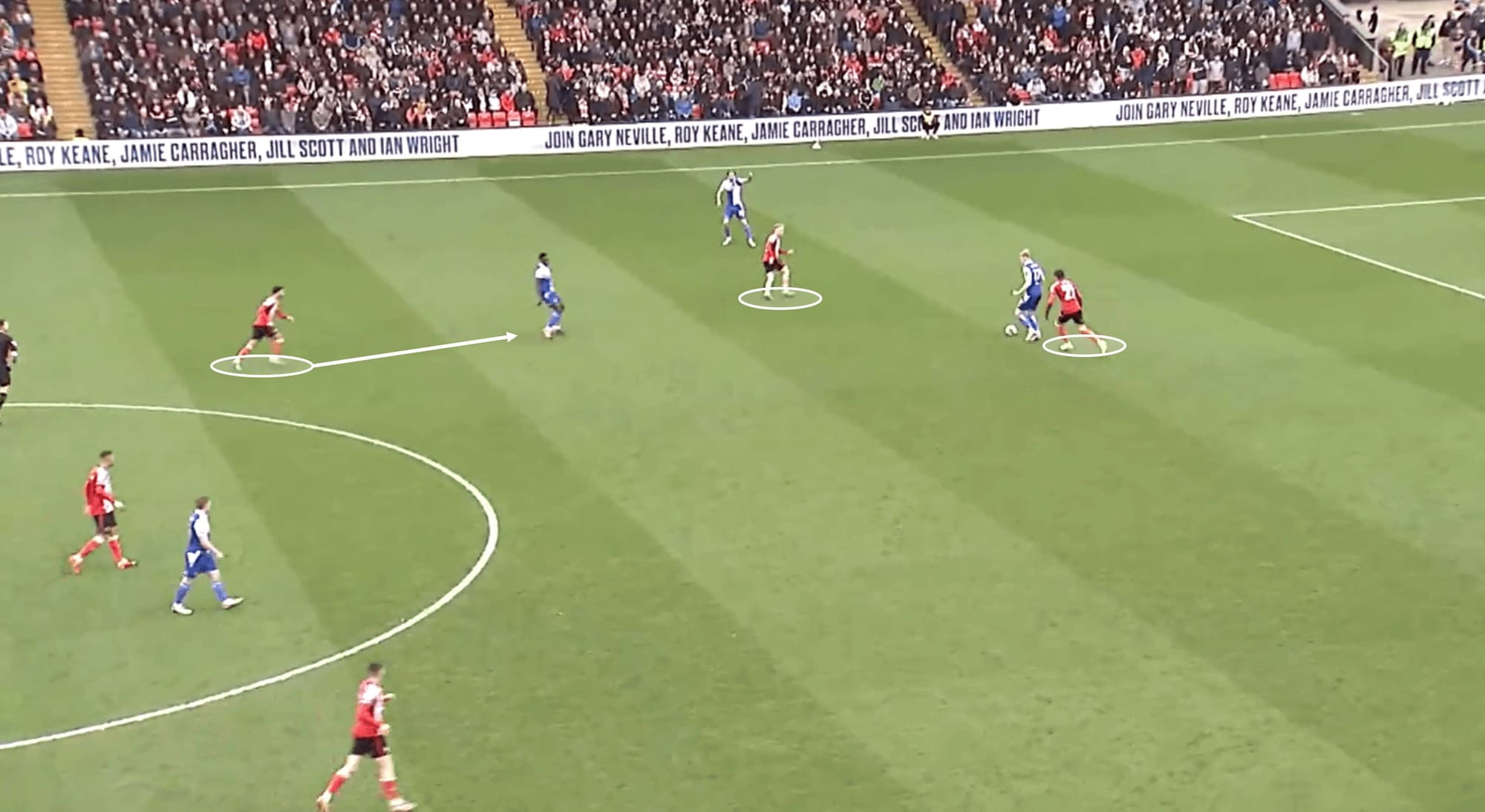
Skubala’s tactics do have room for the use of a triggered press high up the pitch, which his side seem to have a good understanding of when, where and how to execute.
As we spoke about, the two centre forwards are often active high up the pitch, more just to hurry the opponent on more than anything, but when certain pressing triggers become apparent, the attacking midfielder in the midfield three can be seen stepping up higher, out of his midfield three and joining the front two.
This is usually to mark the next central passing option, of which you can see an example of in the image above.
With this movement from the midfielder, there will be a slight shift in shape behind him, with his midfield and defensive teammates preparing to suffocate the midfield unit if required.
Operating within the mid-block
The fact that Lincoln has such a strong defensive record despite not incorporating high-pressing tactics indicates that they have a strong defensive ability in their own half, individually, and as a unit.
With this in mind, deploying a mid-block should come as no surprise—Lincoln likes to suffocate the opponent in midfield, timing the increase of pressure and intensity well.
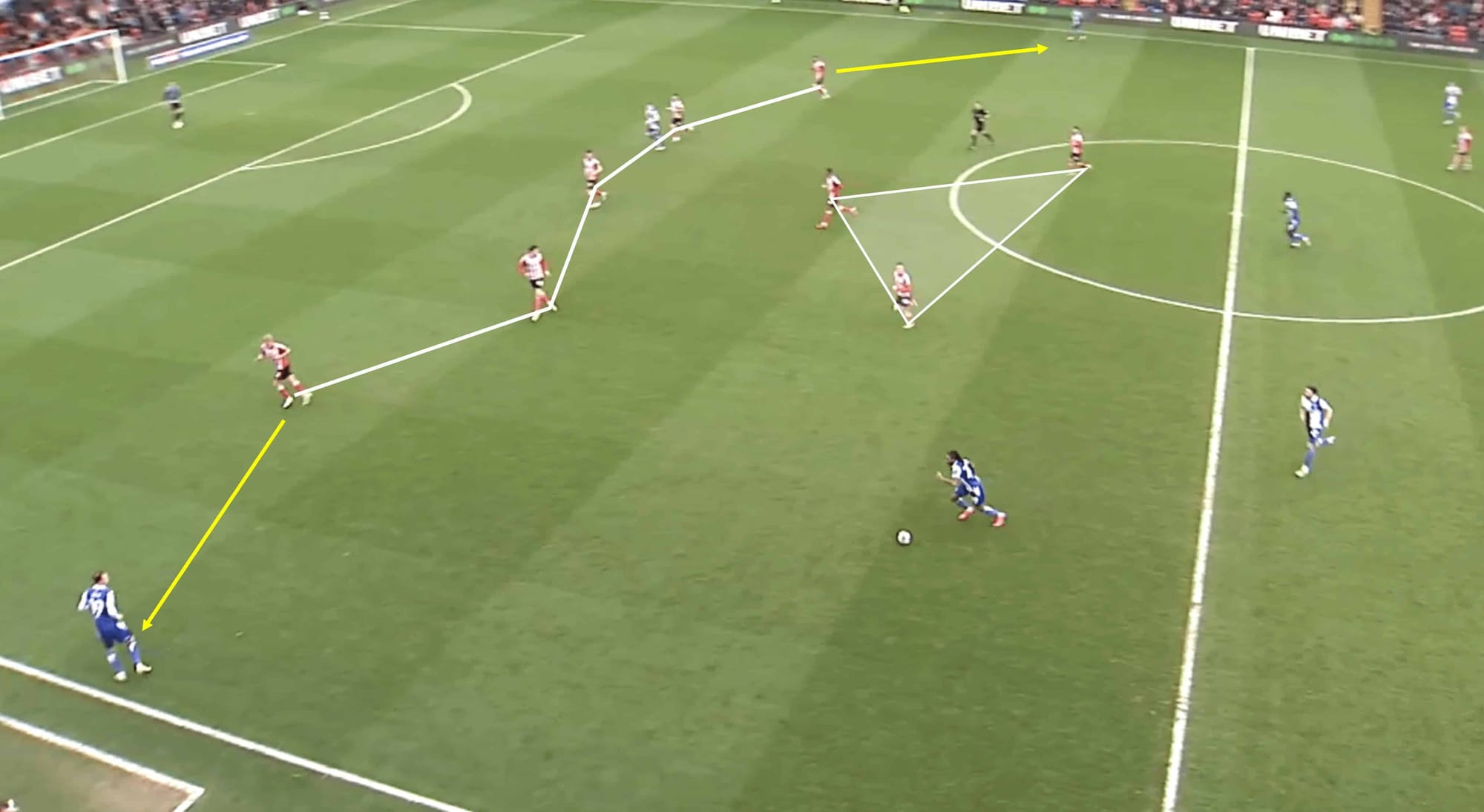
This view of Lincoln shaping up to face an oncoming attacking attempt from the opponent is an excellent example of their mid-block lineup.
The back three becomes a firm back five, with the three central defenders becoming narrow.
The wing-backs take up positions in the half-space to mark any wide options for the opponent.
As for the midfield three, they like to remain compact when possible, but as you imagine, they do have to stray from the path slightly to combat the opposition’s move forward – but the general principles remain.
In the image above, for example, the near-side midfielder recognises that he must engage the man on the ball as he is the closest Lincoln player to him, but he shifts across with backup from his unit.
The space between the three will increase at times, but they will look to remain as a unit as much as possible to block the opposition from playing through them.
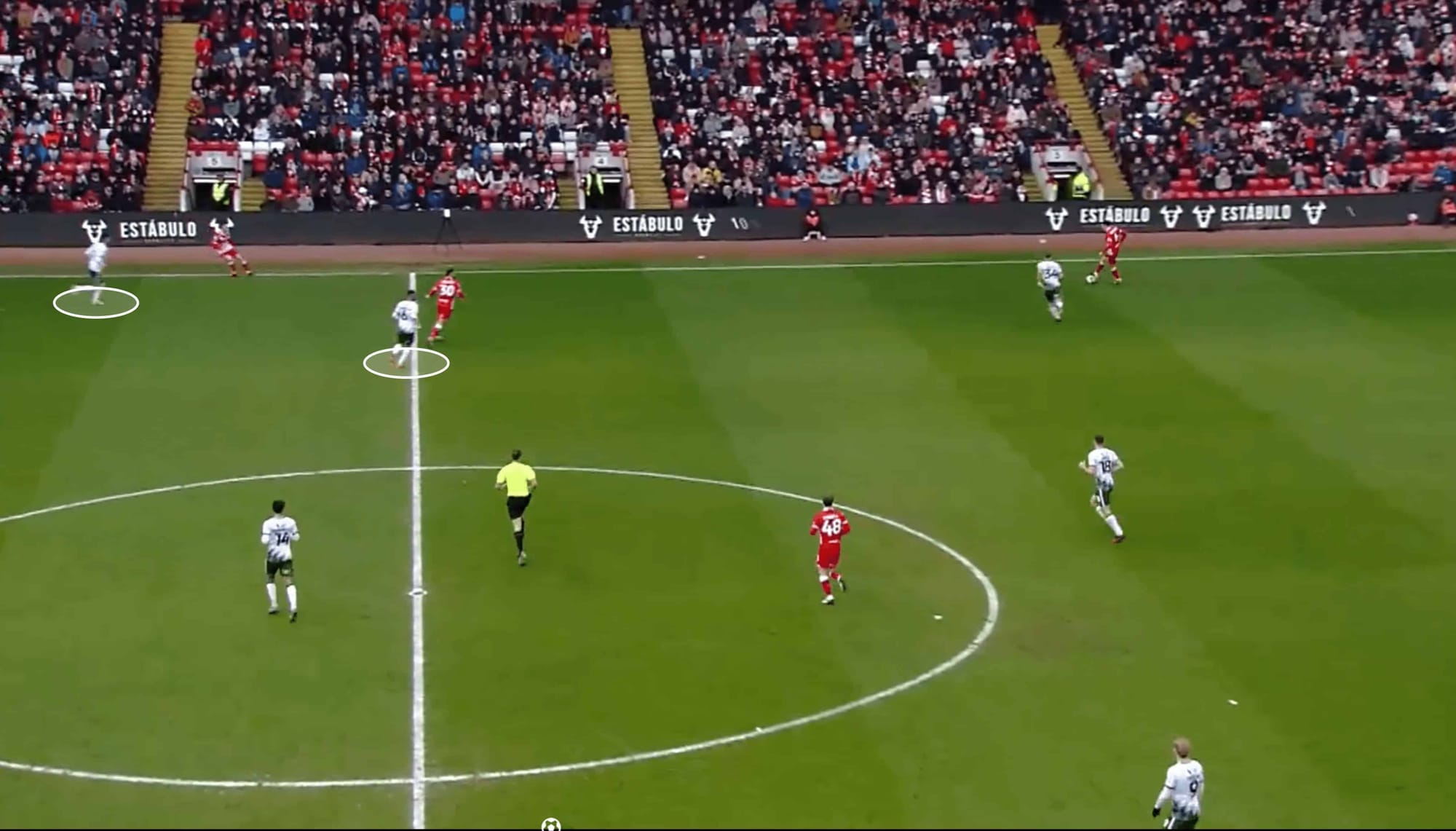
As mentioned, Lincoln become more defensively active in the midfield third.
One of their strengths is the ability to adapt to various situations and combat a variety of attacking approaches, but something we see regularly from them is stopping the opposition from playing out pressure-free, often man-marking immediate passing options and waiting for what they deem to be the right moment to either intercept play or make a challenge.
You can see why Lincoln City leans into their defensive attributes—43.03 interceptions per 90 is the fifth-highest in League One, and that shows a consistent quality to break up opposition play—and much of that comes in midfield.
They also make 65.89 defensive duels per 90—the third-highest rate in the division, backed up by a 65% win rate (fourth highest).
This shows a high defensive engagement matched with, again, consistency and quality.
If the data points towards one defensive weakness, it’s their defensive ability in aerial duels.
They’ve conceded 12 headed goals this season, which is the third-highest total in League One at the moment.
They also struggle in aerial duels generally, winning just 42.5% of their aerial battles, which is League One’s second-worst win rate.
Lincoln City Attacking prowess
Last season, Lincoln had one of the strongest defensive records in League One but also had the baggage of being one of the division’s weakest sides in attack, scoring just 47 times.
This trend continued in the opening months of the current campaign, ultimately leading to Mark Kennedy’s dismissal.
Skubala has been able to drastically improve this part of Lincoln’s game, with the Imps scoring 62 league goals at the time of writing while also maintaining a near-perfect defensive performance.
The last 10 games, in particular, have been particularly fruitful for the Imps, as we explore in this final analysis segment.
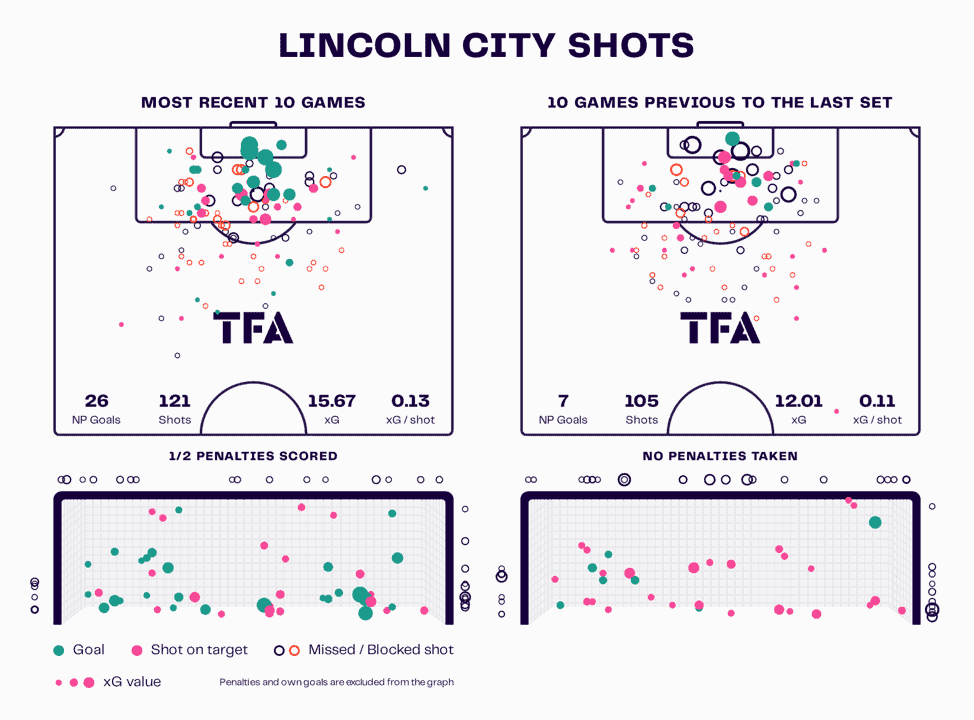
Lincoln’s current tally of 62 goals/1.3 per 90 is a clear improvement over last season’s total.
They’ve stepped up their efforts in recent weeks, as you can see from the visual above.
26 non-penalty goals in their last 10 League One fixtures is almost four times better than their record in the 10 games prior to that, despite an xG jump of just 3.66, suggesting that Lincoln are simply being more clinical in attack.
Of course, there was that impressive three-game run where the Imps bagged 16 goals in three games, which certainly boosts the numbers, but nothing can be taken away from that and their general attacking play of late.
Usually, Lincoln like to build attacks through central areas, which the 3-5-2 helps them with, as mentioned early on in this analysis, and in this purple patch in front of goal, they’ve leaned into a more varied approach once they reach the final third.
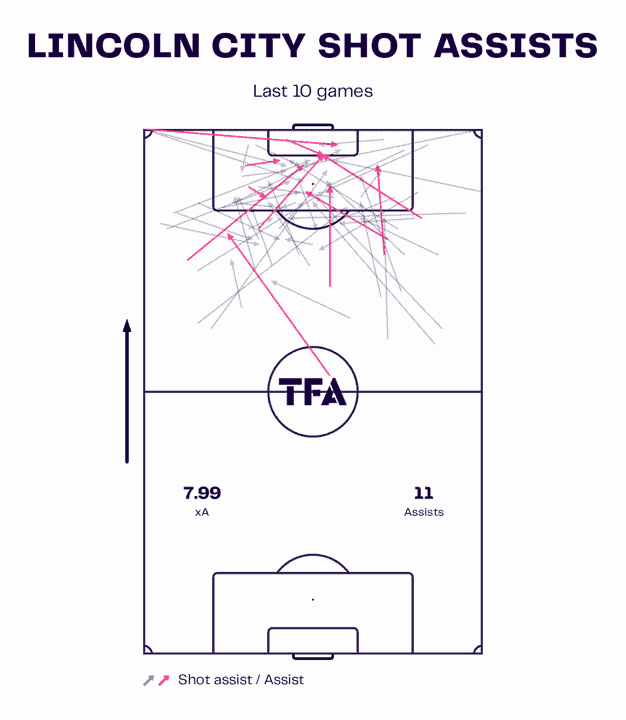
Over the course of the season, they rank low for cross attempts, progressive passes, and passes to the final third but have still found ways to be dangerous in attack.
Some of the goals scored in recent weeks have been headed goals from crosses, something which will please Skubala and fans alike.
As you can see, though, despite an increase in attacking impetus on the flanks, many of their assists lately have come from central midfield areas.
Conclusion
At the time of writing, Lincoln City are five points off the play-offs with three games remaining, so you’d think they’d need to win their remaining matches and hope results elsewhere are kind to them.
Regardless, Lincoln fans will be able to appreciate a clear improvement and tactical direction under Michael Skubala, with the former Leeds United coach finding an effective balance between defence and attack.

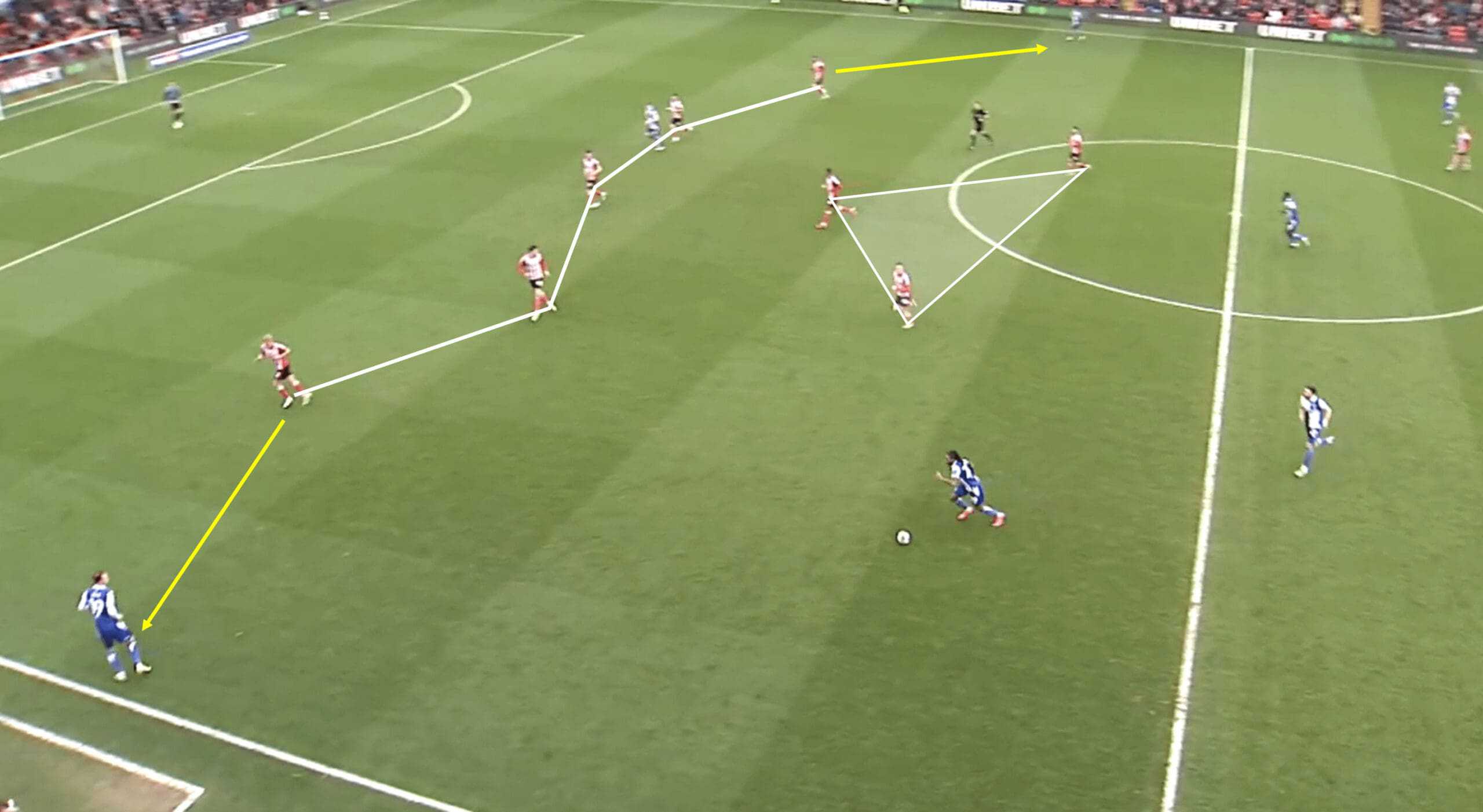




Comments